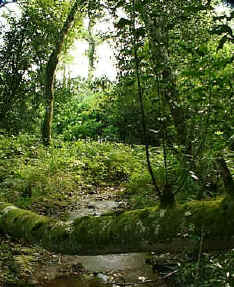Types of Broadleaf
Woodland - continued
previous
| ALDER / WILLOW CARR - WET WOODLAND Alder and Willow are trees which thrive on wet and /or waterlogged soils. Both species will commonly be found along the banks of streams and rivers and wherever poor drainage results in wet soils. A natural process of succession will also lead to wetlands and marshes eventually becoming wet woodland. Wetlands and marshes naturally gradually dry out through siltation and evaporation. As the ground becomes dry enough to support tree growth, Alder and Willow will gradually grow up and replace existing vegetation, leading to the development of wet woodland. Further drying out of the land leads naturally into a drier woodland type dominated by other broadleaf trees such as Oak. The final dominant tree species will depend largely on soil type.
In times past, wet woodland would have been common in Britain, particularly on the sides and in the bottom of poorly drained river valleys. Extensive drainage for development of poor, marshy land has meant that wet woodland has become something of a rarity and is one of the habitats selected for conservation action in the Devon Biodiversity Action Plan. Continue to Types of Coniferous Woodland |
Plant survey of a wet woodland
Bird survey of a wet woodland
